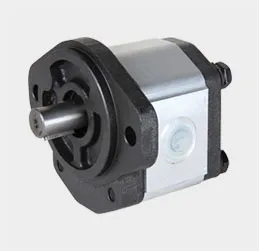sand casting an engine block
Sand Casting an Engine Block A Comprehensive Overview
Sand casting is a widely used manufacturing process for producing complex shapes and components, particularly in the automotive industry. One of the most critical applications of sand casting is in the fabrication of engine blocks. This article explores the intricacies of sand casting an engine block—from design considerations to the advantages and potential challenges of the process.
The Sand Casting Process
At its core, sand casting involves creating a mold from a pattern, pouring molten metal into the mold, and allowing it to cool to form the desired part. The process begins with the design of the engine block, which includes careful consideration of dimensions, cooling channels, and internal features necessary for optimal performance. Computer-Aided Design (CAD) software is often utilized to create a precise model of the engine block.
The next step is creating the mold. This typically involves packing a mixture of sand and bonding agents around a pattern of the engine block. The sand is often coated with a fine layer of oil or resin to improve its cohesiveness and prevent the mold from sticking to the pattern. Once the mold is formed, the pattern is removed, leaving a cavity that mirrors the shape of the engine block.
Pouring and Cooling
With the mold prepared, the next phase is melting the metal, usually an aluminum or iron alloy, depending on the specific requirements of the engine. The molten metal is then poured into the mold, filling the cavity created by the pattern. Care must be taken during this stage to avoid defects such as air bubbles or inclusions, which can compromise the integrity of the final product.
Once poured, the metal is allowed to cool and solidify, a process that can take anywhere from several minutes to several hours, depending on the size of the engine block and the properties of the metal used. After cooling, the mold is broken away to reveal the cast engine block.
Advantages of Sand Casting
sand casting an engine block

Sand casting offers several advantages, making it a favored choice for producing engine blocks. Firstly, the process is versatile and can accommodate a wide range of metal alloys. This flexibility allows manufacturers to choose materials that best suit the specific use case of the engine block being produced.
Secondly, sand casting is well-suited for producing intricate shapes and internal features. The ability to create complex geometries means that engine blocks can be designed with optimized cooling systems and structural support, enhancing their overall performance.
Moreover, the initial cost of creating sand molds is relatively low compared to other casting methods, making it an economically viable option for both small and large production runs. This cost efficiency is particularly important for automotive manufacturers, where budget constraints are prevalent.
Challenges in Sand Casting
Despite its many advantages, sand casting is not without challenges. One significant issue is the dimensional accuracy of the final product. Due to the thermal expansion of the sand and metal during the casting process, achieving tight tolerances can be difficult. This discrepancy can necessitate additional machining, increasing production time and costs.
Furthermore, the quality of the sand and the skill of the operators play critical roles in the success of the casting process. Poor-quality materials or inexperienced workers can result in defects and lower yield rates.
Conclusion
In conclusion, sand casting an engine block is a vital process within the automotive industry, combining art and science to create robust and efficient engine components. By understanding the intricacies of the process and recognizing both its benefits and challenges, manufacturers can continue to refine their techniques, ensuring high-quality products that meet the demands of modern automotive engineering. The continued evolution of sand casting technology promises to enhance its efficacy and application, solidifying its role in the future of engine block manufacturing.
-
OEM Sand Cast Pump Valve Fittings - Baoding Hairun Machinery And Equipment Trading Co., Ltd.NewsAug.01,2025
-
Custom OEM Impellers | High Efficiency & PrecisionNewsAug.01,2025
-
OEM Sand Cast Pump Valve Fittings - Baoding Hairun Machinery | Customization, Quality AssuranceNewsAug.01,2025
-
OEM Sand Cast Pump Valve Fittings - Baoding Hairun Machinery And Equipment Trading Co., Ltd.NewsAug.01,2025
-
OEM Sand Cast Pump Valve Fittings - Baoding Hairun Machinery And Equipment Trading Co., Ltd.NewsJul.31,2025
-
OEM Sand Cast Pump Valve Fittings - Baoding Hairun | Precision Engineering, CustomizableNewsJul.30,2025















